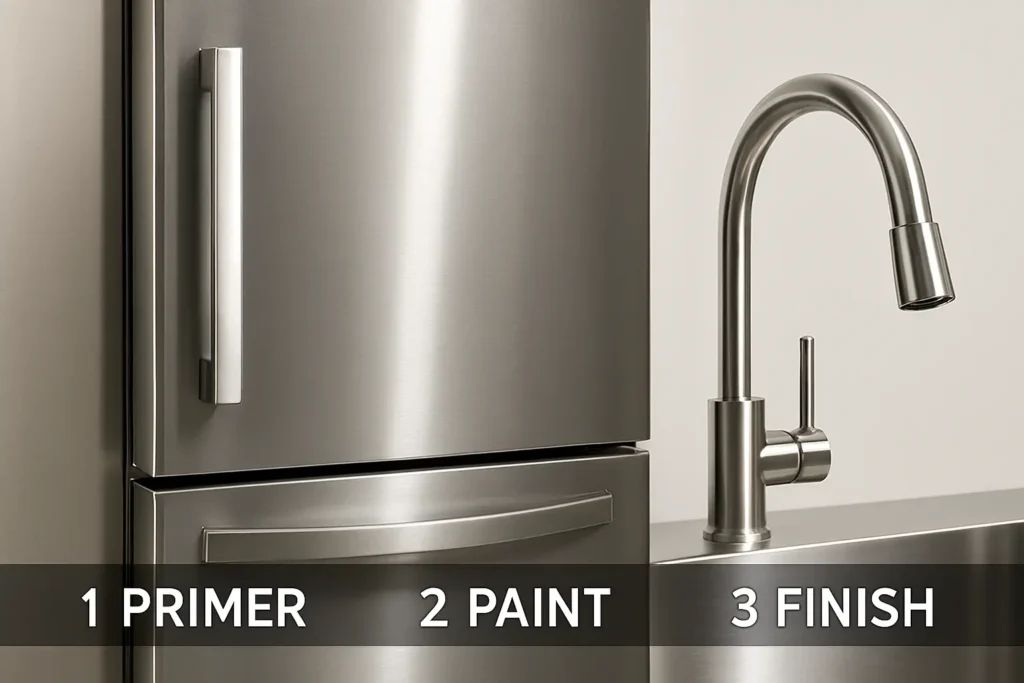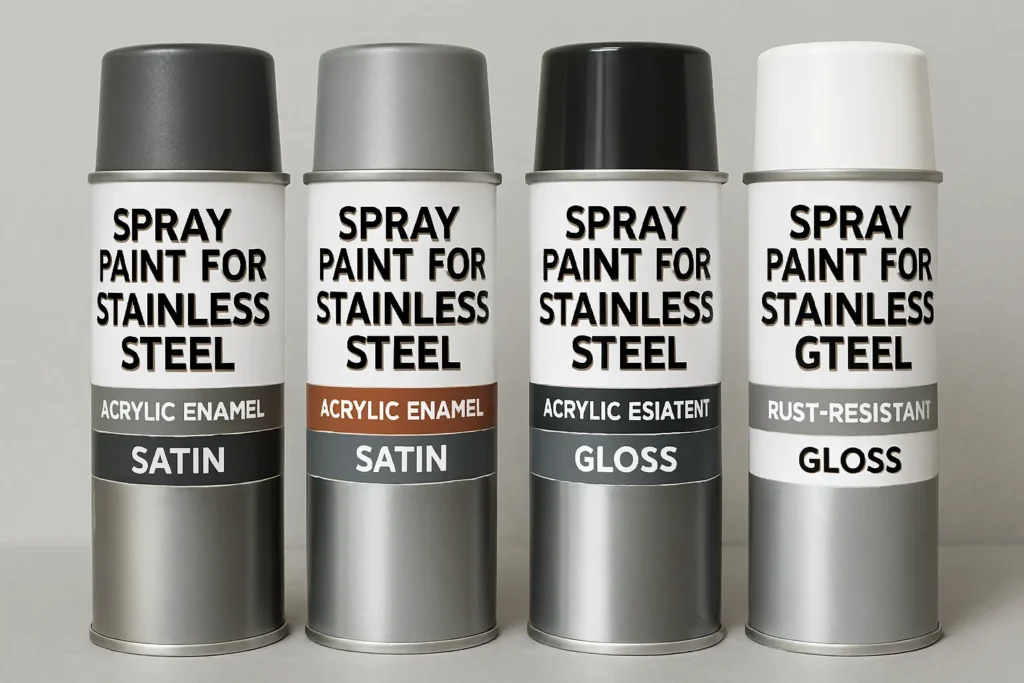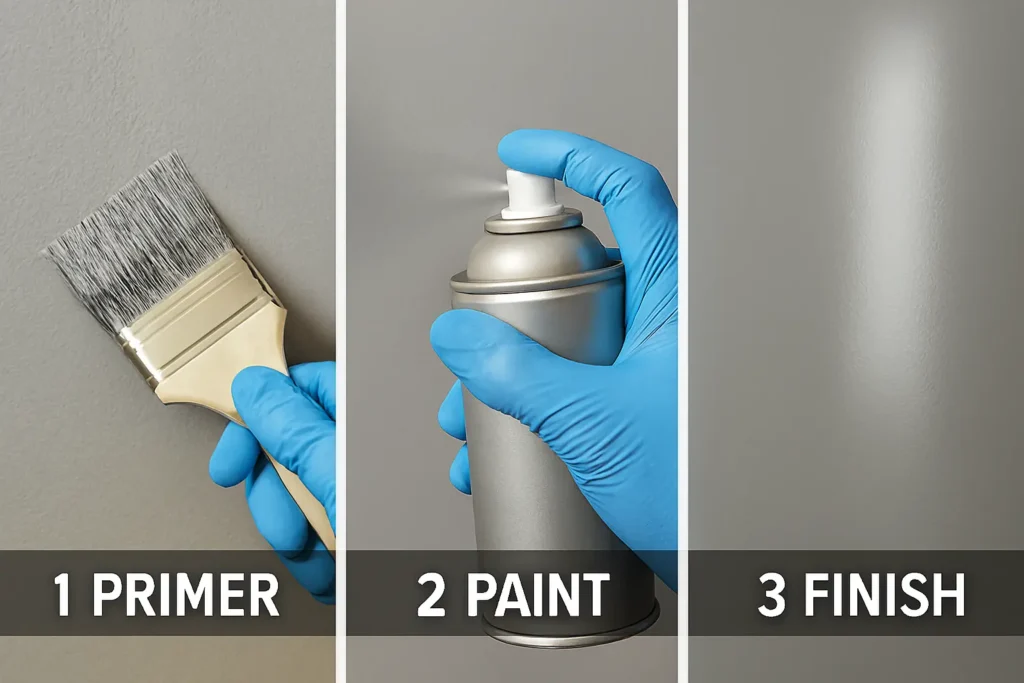Stainless steel, known for its durability and sleek finish, is a material found in many households, from kitchen appliances to outdoor furniture. Over time, you may want to refresh the appearance of your stainless steel surfaces, but the big question is: can you paint stainless steel? The good news is that you absolutely can, and with the right techniques, your painted stainless steel items can look just as good as new.
In this blog post, we will explore the best approaches to painting stainless steel, the necessary preparation steps, and which paints work best for this smooth, hard surface.
Understanding Stainless Steel
Before jumping into the painting process, it’s important to understand what makes stainless steel unique. Stainless steel is a mixture of iron, chromium, and sometimes nickel, which gives it its resistance to rust and corrosion. Its smooth, shiny surface is great for appliances and decorative items but poses a challenge for painting due to its low porosity.
Prepping Stainless Steel for Paint
Proper preparation is key when painting stainless steel to ensure the paint adheres properly and lasts long-term. Here’s what you need to do before applying the paint:

1. Clean the Surface
Begin by thoroughly cleaning the stainless steel surface. Use a degreaser or a mixture of warm water and mild soap to remove dirt, grease, or fingerprints. For tougher stains, you can use a vinegar-water solution.
2. Sanding the Surface
To help the paint adhere better, lightly sand the stainless steel with a fine-grit sandpaper. This will create a slight texture on the smooth surface. Be sure to wipe away all dust with a clean cloth after sanding.
3. Priming the Surface
Stainless steel is resistant to paint adhesion, which is why applying a primer is essential. Use a rust-resistant primer that is specifically designed for metal surfaces. This step will ensure that the paint sticks and provides better coverage.
Choosing the Right Paint for Stainless Steel
When it comes to the best paint for stainless steel, not all paints are created equal. It’s crucial to select a paint that is durable, long-lasting, and suitable for metal surfaces. Let’s take a closer look at some options:

1. Spray Paint for Stainless Steel
Spray paints are a popular choice for painting stainless steel, especially for appliances and furniture. Acrylic enamel spray paint is a top option, as it creates a smooth, durable finish. Brands like Rust-Oleum and Krylon offer stainless steel-specific spray paints that are formulated for easy application on metal surfaces.
2. Waterproof Paint for Stainless Steel
Stainless steel items exposed to moisture, such as bathroom fixtures or outdoor furniture, need a paint that can withstand the elements. Look for waterproof paints specifically designed for metal surfaces to prevent rusting and corrosion.
3. Best Stainless Steel Paint Finish
For a professional-looking result, choose a paint finish that complements the surrounding decor. Satin and gloss finishes are commonly chosen for stainless steel surfaces because they enhance the natural shine of the metal. A satin finish provides a sleek, modern look, while a gloss finish gives a more polished, shiny appearance.
4. Rust-Resistant Paint
If you’re painting stainless steel in areas prone to wear and tear, such as kitchens or outdoor spaces, consider rust-resistant paint to protect the surface from scratches, chips, and rust formation.
How to Apply Paint to Stainless Steel
Once you’ve selected the right paint, it’s time to apply it. Here’s a step-by-step guide to help you achieve a flawless finish:
1. Apply Primer
Use a brush or spray to apply a thin layer of primer to the stainless steel surface. Allow it to dry completely before moving on to the next step.
2. Painting the Surface
When applying the paint, use thin, even coats. If you’re using spray paint for stainless steel, hold the can about 12 inches from the surface and spray in light, even passes. Avoid heavy coats, as this can cause drips and uneven coverage.
3. Allow Proper Drying Time
Let each coat of paint dry thoroughly before applying the next one. This is especially important for spray paints to avoid smudging.
4. Finishing Touches
Once the paint is dry, you may want to apply a clear protective coating to enhance the durability of the paint. This is particularly beneficial for surfaces that will experience frequent use or exposure to moisture.

Key Considerations
- Durability: While stainless steel can be painted, it’s essential to note that painted stainless steel may not be as durable as the natural stainless steel finish. It’s more prone to scratches and chips over time, especially in high-traffic areas.
- Maintenance: Painted stainless steel surfaces require regular cleaning and maintenance to ensure the paint doesn’t fade or chip. Avoid using harsh cleaning chemicals that may damage the paint.
Alternatives to Painting Stainless Steel
If painting stainless steel doesn’t seem like the right option for you, there are alternatives to change its appearance:
- Stainless Steel Vinyl Wraps: For a sleek, shiny look, consider using a stainless steel vinyl wrap. This alternative provides a similar aesthetic to painted stainless steel but is easier to replace and maintain.
- Stainless Steel Cleaner: If your stainless steel is starting to look dull or tarnished, using a specialized cleaner can restore its shine without the need for paint.
Conclusion
In conclusion, painting stainless steel is a viable option for those looking to refresh or change the appearance of their metal surfaces. With the right preparation, paint, and techniques, you can successfully paint stainless steel for a new and updated look. Make sure to choose a paint suitable for stainless steel, prep the surface properly, and apply the paint carefully to achieve the best results.
For more tips on painting various surfaces, you can check out these articles on how to paint a ceiling, how to clean walls before painting, and the best paint for bathroom ceilings.

Leave a Reply